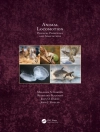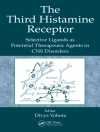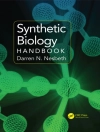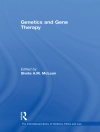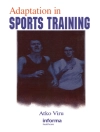Mast cells are versatile, tissue-homing secretory cells, which were first described by Paul Ehrlich in 1878. Mast cells have long been implicated in the pathogenesis of allergic reactions and certain protective responses to parasites. Their functional role, however, has been discovered to be increasingly complex and multifarious. Mast cells have been implicated in various cell-mediated immune reactions, being found in tissues from multiple disease sites, and as a component of the host reaction to bacteria, parasite, and even virus infections. They have also been shown to participate to angiogenic and tissue repair processes after injury. The importance of a possible functional link between chronic inflammation and cancer has long been recognized. As most tumours contain inflammatory cell infiltrates, which often include plentiful mast cells, the question as to the possible contribution of mast cells to tumour development has progressively been emerged. In this book, the general biology of these cells, their development, anatomical distribution and phenotype as well as their secretory products will first be discussed. The biology of tumour cells, their structural and molecular characteristics, the specificity of the tumour microenvironment and the development of a vascular network in the tumour context will be analyzed. The involvement of mast cells in tumour biology and tumour fate will then be considered, with particular emphasis on the capacity of these cells to stimulate tumour growth by promoting angiogenesis and lymphangiogenesis. The last chapter suggest that mast cells may serve as a novel therapeutic target for cancer treatment.
قائمة المحتويات
Introduction.- 1. The mast cell.- 1.1. A historical overview.- 1.2. Biology of mast cells.- 2. Mast cell mediators.- 2.1. Granule composition.- 2.2. Histamine and serotonin.- 2.3. Proteases.- 2.4. Lipid mediators.- 2.5. Cytokines and growth factors.- 2.6. Chemokines.- 3. The tumour cell.- 3.1. Biology of tumour cell.- 3.2. The importance of microenvironment in tumor metastasis.- 3.3. The “seed and soil” theory.- 4. Tumour angiogenesis.- 4.1. The angiogenic switch.- 4.2. Phenotypic and genotypic characteristics of tumor vessels and genetic evidence that tumours are angiogenesis-dependent.- 4.3. What is the evidence that genetic instability promotes the angiogenic switch?.- 4.4. Hypoxic regulation of tumour angiogenesis.- 4.5. The role of pericytes in tumour angiogenesis.- 4.6. The role of inflammatory cells in tumour angiogenesis.- 4.7. Participation of hematopoietic cells and endothelial precursor cells to tumour angiogenesis.- 4.8. Alternative mechanisms of tumour angiogenesis.- 4.9. Vascular cooption.- 4.10. The prognostic significance of tumour angiogenesis.- 4.11. Angiogenesis is not necessarily involved in tumour progression.- 5. Mast cells and tumours.- 5.1. Mast cells and tumour growth in humans: pro and contra.- 6. Mast cells and tumour angiogenesis.- 6.1. Mast cell-induced angiogenesis studied by means of in vitro and in vivo assays.- 6.2. Mast cell-induced angiogenesis studied by means of experimental carcinogenesis.- 6.3. Angiogenic factors stored in mast cells.- 6.4. Mast cells and angiogenesis in human solid tumours.- 6.5. Mast cells and angiogenesis in human hematological tumours.- 7. Mast cells and tumour lymphangiogenesis.- 8. Drug affecting mast cells.- Concluding remarks and perspectives.- References.



